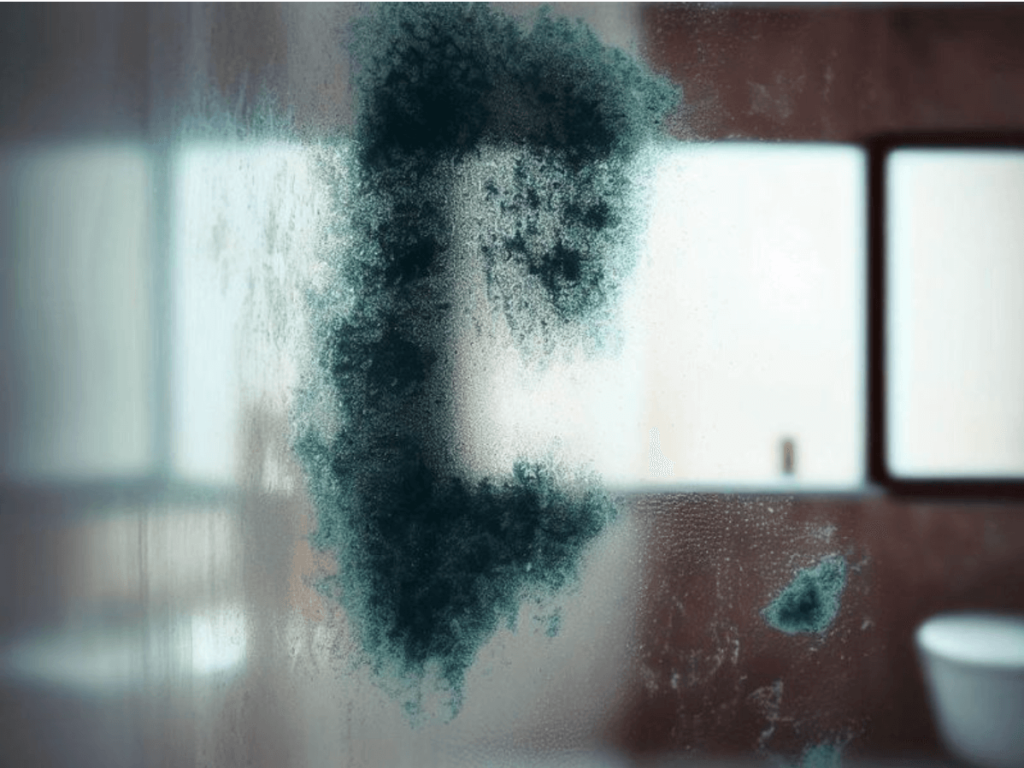Do you have a mold issue in your bathroom? It’s a common problem, but you can easily address it.
Understanding the causes of bathroom mold is crucial for prevention. Excess moisture in poorly ventilated bathrooms promotes mold growth. Solutions include improving air circulation, using dehumidifiers, and maintaining regular cleaning to prevent mold buildup.

Causes of Bathroom Mold Growth
Mold can be a serious issue in bathrooms, so knowing the causes and taking preventive measures is essential.
Common factors contributing to mold growth include moisture from bathtubs, showers, sinks, and toilets; poor insulation; dust mites as a food source; and damage from harsh chemical cleaners.
Remember these points as you focus on prevention and treatment strategies to maintain a clean and safe bathroom.
Signs of Bathroom Mold Infestation
Be aware of signs and symptoms indicating a mold issue in your bathroom. Familiarizing yourself with these indicators will help you take action promptly to protect your home and health.
- Visible mold colonies: Check for mold growth on walls, ceilings, grout lines, and around fixtures like showers, bathtubs, toilet tanks, and sinks. Mold may appear as black, green, or brown spots or patches. People can sometimes mistake mold for black sediment from wells or broken-down fixtures. But if it appears fluffy, you can be reasonably sure it’s mold.
- Musty odors: Mold often produces a distinct, unpleasant smell. If you notice a persistent musty odor in your bathroom, it may be a sign of hidden mold growth.
- Water spots or stains: Discolored or damp spots on walls, ceilings, or floors can indicate water leaks, which create a favorable environment for mold growth.
- Peeling paint or wallpaper: Bubbling, cracking, or peeling paint or wallpaper can be a sign of excess moisture and possible mold growth behind the surface.
- Warping wood: Swollen or warped wooden surfaces, such as baseboards or cabinetry, can result from moisture damage and may harbor mold.
- Condensation: Persistent condensation on windows, mirrors, or other cold surfaces can indicate high humidity levels, which promote mold growth.
- Excessive moisture buildup: Check for dampness in corners, behind toilets, under sinks, and inside cabinets. Prolonged moisture can lead to mold growth.
- Health symptoms: If you or your family members experience allergy-like symptoms, such as sneezing, itchy eyes, or respiratory issues, while in the bathroom, it could be a sign of mold exposure.
Bathroom Mold Prevention Strategies
- Use exhaust fans and open windows
- Install dehumidifiers or fans
- Fix plumbing issues promptly
- Check and clean condensation areas
- Apply mildewcide-containing products
To prevent bathroom mold, ensure proper ventilation with an exhaust fan and by opening windows when possible. Address plumbing issues promptly to prevent water accumulation. Routinely check for condensation around your tub, sink, and toilet, and clean up standing water immediately. Use bathroom-specific cleaning products containing mildewcides to combat mold growth.
Consider adding humidity control features like dehumidifiers or fans in high-risk areas, such as showers or behind toilets where hidden leaks may occur. These precautions will keep your bathroom free from hazardous mold levels over time.
Additionally, for added protection, contemplate applying mold-resistant paint or sealant on walls and grout. If you’re in Phoenix, it’s advisable to arrange for a professional mold testing service, ensuring that your bathroom stays consistently mold-free, especially with the expertise of professionals specializing in Mold Testing in Phoenix.
Improving Bathroom Ventilation
Adequate ventilation is crucial in combating mold growth. You can achieve this by adding a window, installing an exhaust fan, or using both. However, opening windows during showers or baths may not be practical or reliable, depending on the weather and human behavior. A vent fan will always exhaust moisture more effectively.
When choosing an exhaust fan, ensure it’s powerful enough for your bathroom’s size. Generally, you need 1 CFM (cubic feet per minute) per square foot to remove humidity effectively. Choose a fan with a timer to avoid forgetting to turn it off, and consult local codes for ductwork installation requirements, such as additional insulation.
You may also consider a recirculating fan for a half-bath, an inline fan for a quieter operation, or a soffit vent. With proper ventilation, you’ll significantly reduce mold issues.
Cleaning & Sanitizing Techniques
After controlling existing mold growth, it’s time to clean and sanitize the affected area.
Wear protective gear such as gloves, a face mask, and goggles. Use an antifungal cleaner designed for bathroom mold removal, and follow the directions carefully.
Next, sanitize with a bleach solution (one part water and three parts bleach), wearing long sleeves, pants, and rubber boots if possible.
Apply the solution and let surfaces air dry. Inspect the area thoroughly, and repeat the process if any mildew remains visible.
When To Call In Professional Services
Even with proper ventilation and prevention measures, mold may still form in your bathroom. In such cases, contact an experienced contractor to assess the situation and recommend the best action.
Qualified specialists can identify the mold type, suggest treatments, and advise on reducing moisture and humidity. Ensure that professionals follow safety protocols during the process. If mold persists despite your efforts, always enlist help from experienced contractors for removal and future prevention.
Keeping Mold at Bay
Mold in your bathroom is a serious issue. Be aware of the signs and symptoms of infestation and understand how mold grows. Preventive steps like improving ventilation and reducing moisture can help keep mold at bay.
If you have mold growth, control it with specific cleaning and sanitizing techniques, along with proper ventilation. If the situation requires professional help, feel free to call in experts to address the issue effectively.
Dealing with bathroom mold doesn’t have to be overwhelming. With smart prevention strategies and prompt control tactics, you can eliminate and prevent current problems from worsening.
Now, go forth and conquer those pesky molds!
